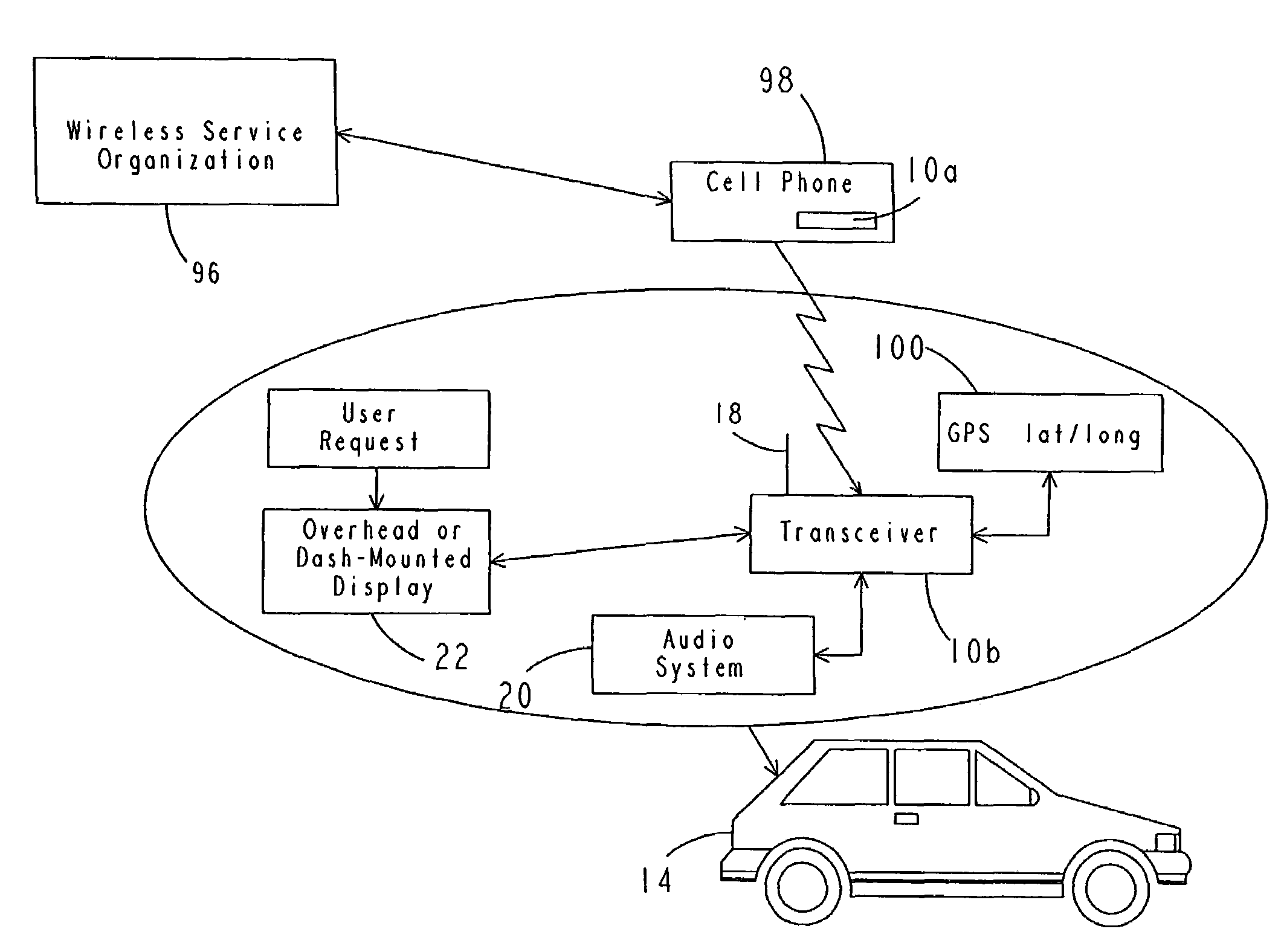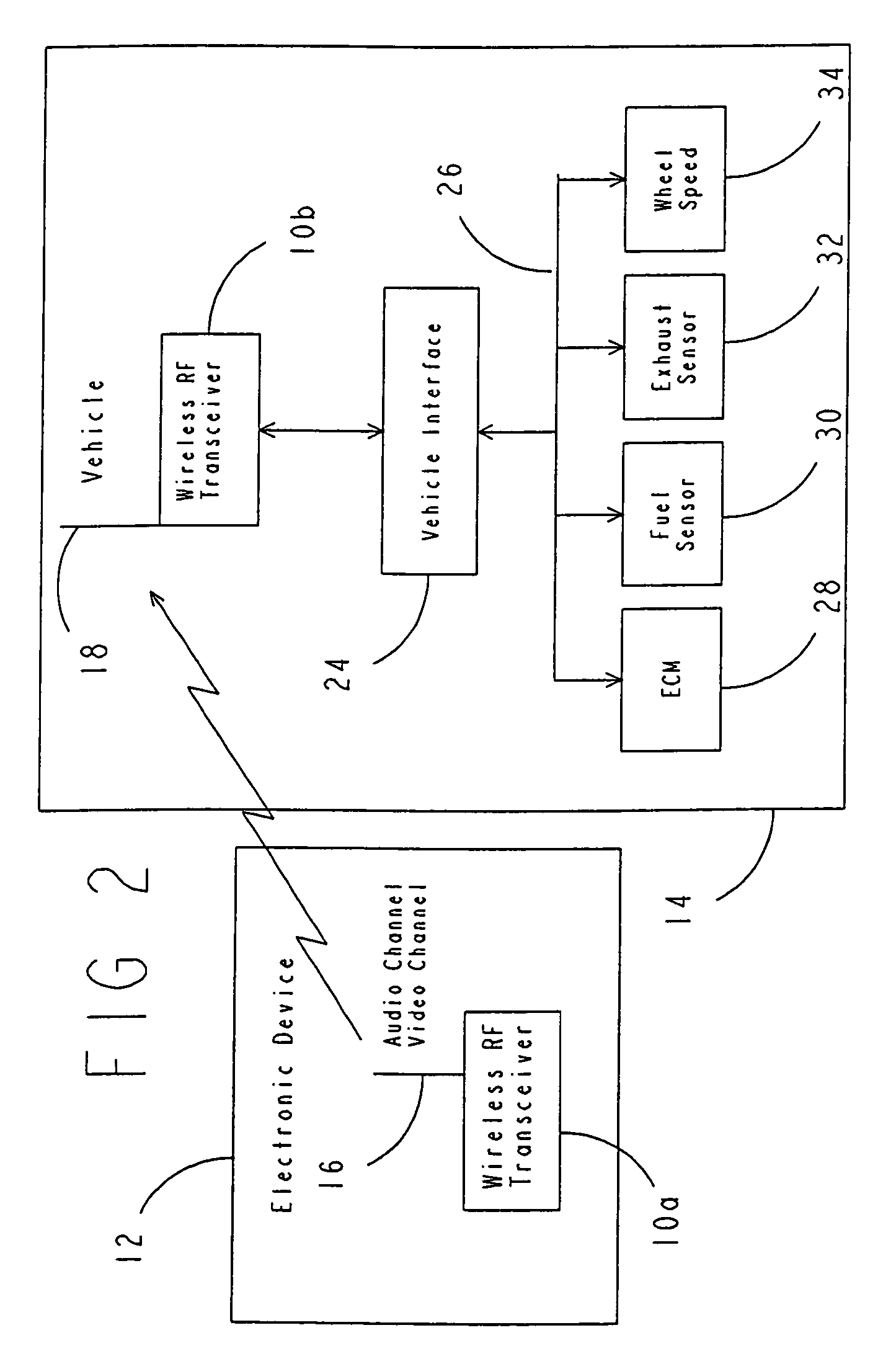Wireless communications systems and method
a communication system and wireless technology, applied in the field of wireless communication systems and methods, can solve the problems of inability to connect two specific electronic components at the same time, difficult communication between more than two electronic devices at one time via cabling, and user flexibility in linking more than two electronic devices together for communication, etc., to achieve negligible power consumption and high security.
- Summary
- Abstract
- Description
- Claims
- Application Information
AI Technical Summary
Benefits of technology
Problems solved by technology
Method used
Image
Examples
Embodiment Construction
[0035]Referring to FIG. 1, a wireless communications system 10 in accordance with a preferred embodiment of the present invention is illustrated. The present invention is broadly directed to a wireless communications system 10 in which at least one pair of RF transceivers 10a and 10b are used to create a wireless communications link between at least two independent electronic devices. Each RF transceiver 10a and 10b operates in accordance with a suitable wireless communications protocol or standard to enable wireless communications between the transceivers 10a and 10b. The specific protocol or standard used also preferably enables the wireless communications link to be established automatically when the two RF transceivers come into proximity with each other. The specific protocol or standard may be the Bluetooth communications standard or the Shared Wireless Access Protocol-Cordless Access (SWAP-CA) specification, or any other suitable wireless communications specification that ena...
PUM
 Login to View More
Login to View More Abstract
Description
Claims
Application Information
 Login to View More
Login to View More - R&D
- Intellectual Property
- Life Sciences
- Materials
- Tech Scout
- Unparalleled Data Quality
- Higher Quality Content
- 60% Fewer Hallucinations
Browse by: Latest US Patents, China's latest patents, Technical Efficacy Thesaurus, Application Domain, Technology Topic, Popular Technical Reports.
© 2025 PatSnap. All rights reserved.Legal|Privacy policy|Modern Slavery Act Transparency Statement|Sitemap|About US| Contact US: help@patsnap.com



